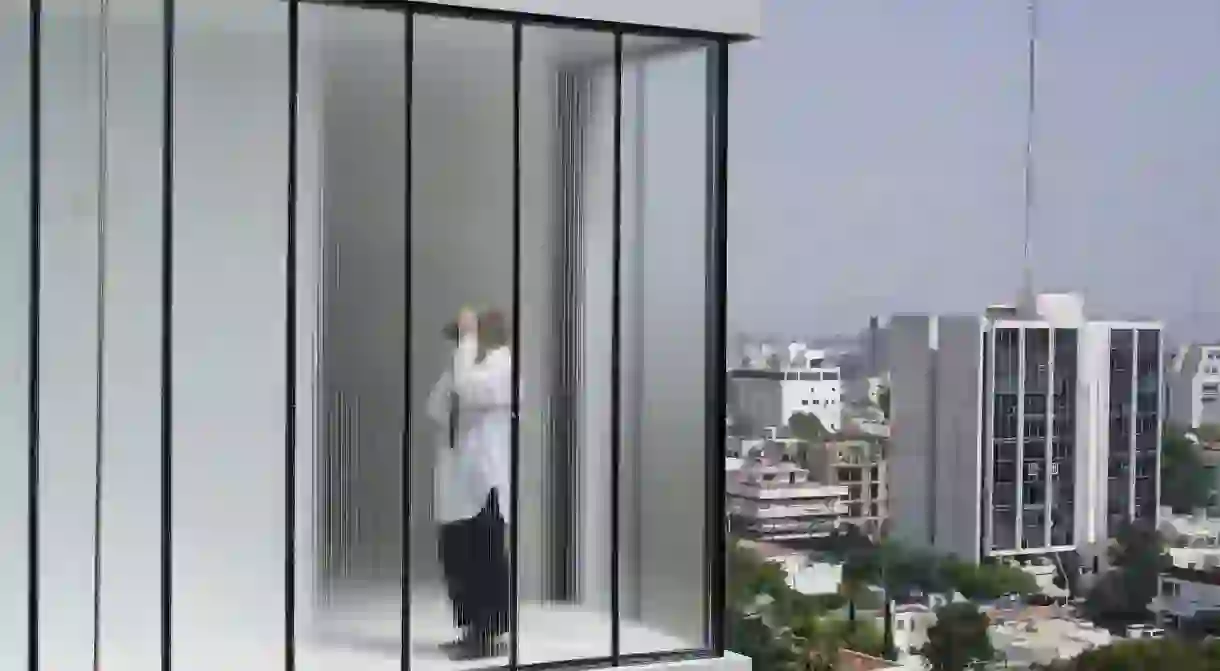Candida Höfer Awarded Outstanding Contribution to Photography

On April 19, Candida Höfer will be awarded the Outstanding Contribution to Photography accolade at the 2018 Sony World Photography Awards (SWPA). Here, we talk to the German photographer who trained under Bernd and Hilla Becher, captures architectural spaces with exquisite detail and wants photography to be accepted as an art form.
Remarkably considering all the spaces that Candida Höfer has photographed, she doesn’t have a favourite period in art history, although she does disclose when asked, ‘I personally relate to Modernism.’
Having studied at the Dusseldorf School under the acclaimed photographers, Bernd and Hilla Becher along with fellow photographers like Andreas Gursky, Höfer has focused her lens over the years on photographing institutional spaces, including theatres, libraries and museums with the utmost precision and sublime specificity.

Employing an extensive research process that even includes asking friends to take snapshots so, ‘I get a feel of how the place looks at that moment,’ Höfer has created some of the most impactful portraits of the spaces we inhabit on a daily basis.
Often having to work around the opening times of the locations she is shooting in, Höfer not only has to work under pressure, but she’s also had to deal with inquisitive security guards. ‘Oh those poor guards, they are just doing their job!’ says the photographer when I ask her about the artistic sacrifices she might have to make when creating her large-format photographs.
As an artist ‘who has broken boundaries in her profession,’ as Scott Gray, the World Photography Organisation CEO said on announcing Höfer as this year’s Outstanding Contribution to Photography recipient, we managed to grab a few moments with the exceptional photographer ahead of the SWPA ceremony and special exhibition to talk about her work.

Culture Trip: What is your earliest memory of a camera or seeing a photograph?
Candida Höfer: I remember one Christmas when I had been given the choice between an inflatable frog for the seaside and a camera. I chose the frog.
CT: What might dictate which location you will photograph?
CH: This is difficult for me to put into words. It is what I would like to call the personality of a space; it has to relate to me in some way.
CT: Do you ever manipulate your images?
CH: All images are manipulations. Photography is not about the reality. I have two decisive moments while working on an image: the moment when I take the photograph and the moment when I have the first test print in front of me. Between those two moments there is often a very long time gap. So when I have the test print in front of me it is the image before me that decides everything like cropping etc. and not my failing memory when I had taken the photograph.

CT: You’ve shown at some of the most resplendent venues, not to dissimilar to the locations you photograph. How important is the venue that your work is shown at?
CH: When you show spaces, the space of showing is indeed very important. There should be an opportunity for the space of showing to relate with the places shown, either by contrast, or by harmony, or by both. What is especially challenging is when some of the images show the space in which the photographs are being exhibited. Curiously, sometimes people do not realize that the space shown, is the space they are in.
CT: Although you remove the physical presence of people, your photographs testify to the impression/impact left by humans. Do you ever see your photographs as a type of portrait?
CH: I think I have mentioned the term “portrait” before. The images may be characterized as portraits of spaces. And like the character of a person is at least also formed by past experiences, spaces, too, are formed by the intentions of the people who had made them and the uses these spaces experienced. All this, I feel, becomes more visible with the absence of people.

CT: What was it like studying under Bernd and Hilla Becher?
CH: They had a very non-directive teaching style and they were always available, night and day, for our questions. And our discussions did not focus solely on photography; we talked about art, and culture and politics. What I took away I think is the importance of patience, perseverance and the need to watch with your eyes open.

CT: What does it mean to be awarded the Outstanding Contribution to Photography prize?
CH: I feel very honoured. And I hope it will further contribute to accepting photography as a fully legitimate medium of artistic expression.

Höfer has personally-selected work including Musée du Louvre Paris XXI (2005), Hermitage St. Petersburg VIII (2014) and Trinity College Library Dublin I (2004) for an exhibition in the 2018 Sony World Photography Awards show at Somerset House, Strand, London WC2R 1LA that is on from April 20 to May 6, 2018. Ticketed entry.
We’ve got an exclusive 20% discount on exhibition tickets to offer our readers for the SWPA exhibition at Somerset House (April 20-May 6, 2018). Just use code CULTURE18 when you book tickets here.
Want to see more on photography? Here are the winners of the SWPA Open competition and National Awards.













